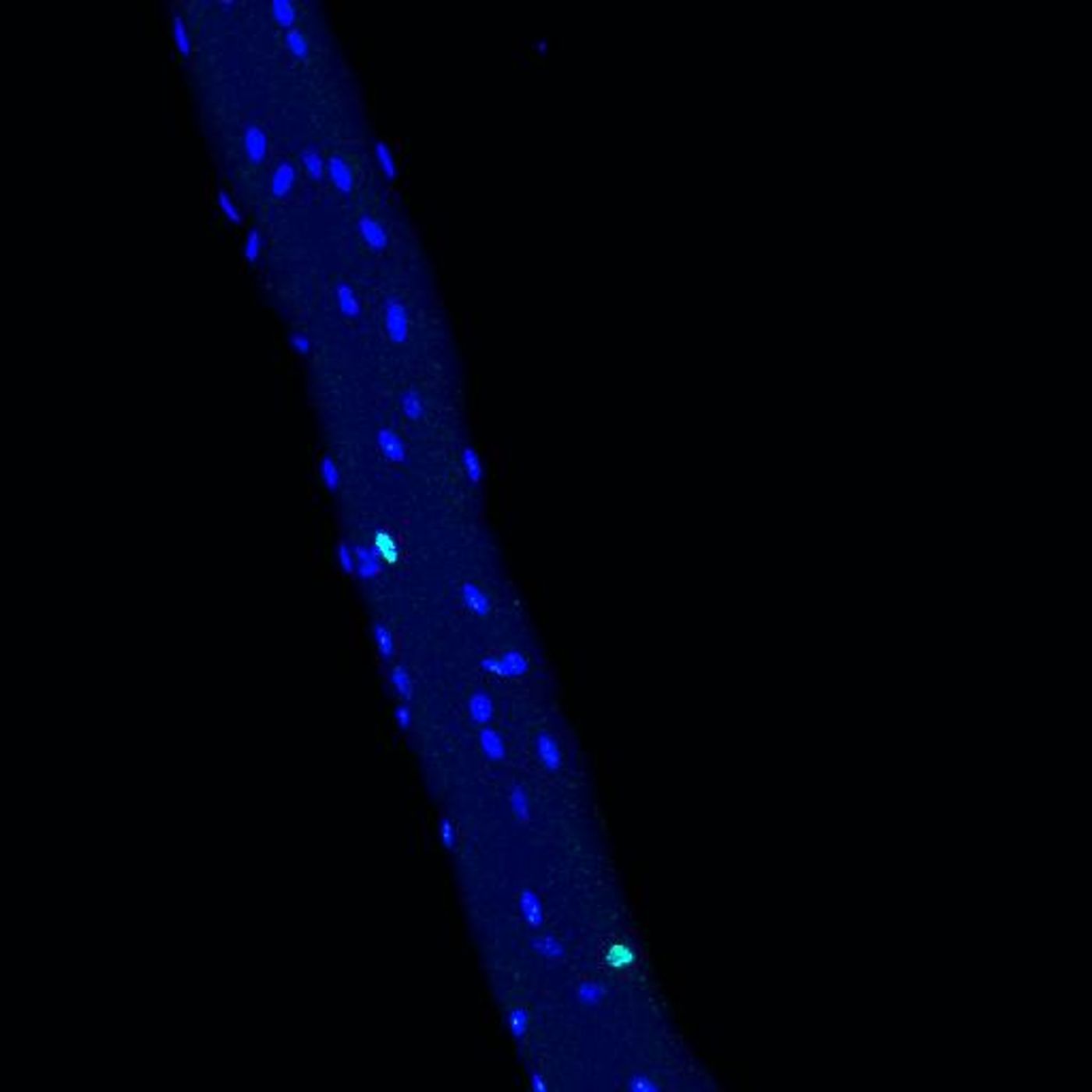Investigating the Many Nuclei in Muscle Cells
Most cells typically have one nucleus that holds its genomic DNA. Muscle fibers, however, are large, individual cells that contain many nuclei. Reporting in Nature Communications, scientists have used a cutting-edge technique to investigate how gene expression differed from one of these nuclei to another (with a tool called single-nucleus RNA sequencing). The effort has shown that these nuclei are not equal, they have very different patterns of gene activity. A better understanding of these nuclei may help us treat muscle disorders like Duchenne muscular dystrophy.
"Due to the heterogeneity of its nuclei, a single muscle cell can act almost like a tissue, which consists of a variety of very different cell types," explained co-lead study author and postdoctoral researcher Dr. Minchul Kim. "This enables the cell to fulfill its numerous tasks, like communicating with neurons or producing certain muscle proteins."
In this work, the researchers assessed gene expression in several thousand muscle fiber nuclei from both healthy mice and those recovering after an injury.
"We wanted to find out whether a difference in gene activity could be observed between the resting and the growing muscle," explained study leader Professor Carmen Birchmeier, head of the research group on Developmental Biology / Signal Transduction at the Max Delbrueck Center for Molecular Medicine in the Helmholtz Association (MDC).
The work revealed that in regenerating muscle tissue, there was an increased amount of activity from genes responsible for growth. "What really astonished us, however, was the fact that, in both muscle fiber types, we found a huge variety of different types of nuclei, each with different patterns of gene activity," noted Birchmeier.
Researchers already knew that nuclei in muscle fibers that are closer to the site of neuronal innervation express different genes than nuclei that are further away from these sites.
"However, we have now discovered many new types of specialized nuclei, all of which have very specific gene expression patterns," revealed Kim.
Some of these nuclei cluster near other cells that are adjacent to the muscle fiber, like tendon cells, for example. "Other specialized nuclei seem to control local metabolism or protein synthesis and are distributed throughout the muscle fiber," Kim added.
But the function of all of the active genes in these nuclei is not yet known. "We have come across hundreds of genes in previously unknown small groups of nuclei in the muscle fiber that appear to be activated," said Birchmeier.
After characterizing these nuclei, the researchers applied a similar approach to the nuclei in muscle fibers of mice that model a common hereditary form of muscular dystrophy. "In this mouse model, we observed the loss of many types of cell nuclei in the muscle fibers," said Birchmeier. The organized clusters of nuclei seen in healthy fibers were gone, now scattered around the cell.
"I couldn't believe this when I first saw it," she said. "I asked my team to repeat the single-nucleus sequencing immediately before we investigated the finding any further." The findings held up. Now, this approach can be used to study other muscle disorders.
"With our study, we are presenting a powerful method for investigating pathological mechanisms in the muscle and for testing the success of new therapeutic approaches," concluded Birchmeier.
Sources: AAAS/Eurekalert! via Max Delbrück Center for Molecular Medicine in the Helmholtz Association, Nature Communications










